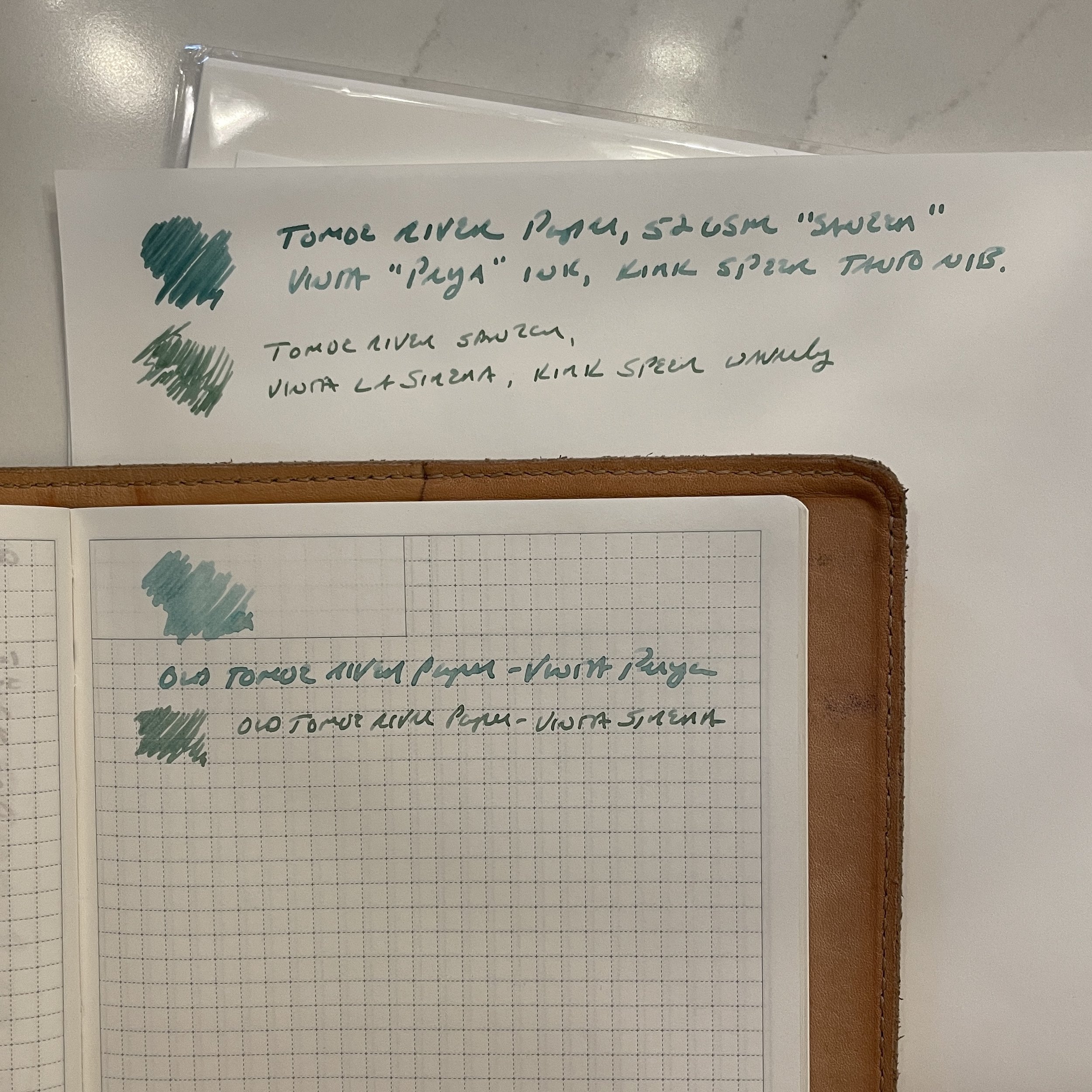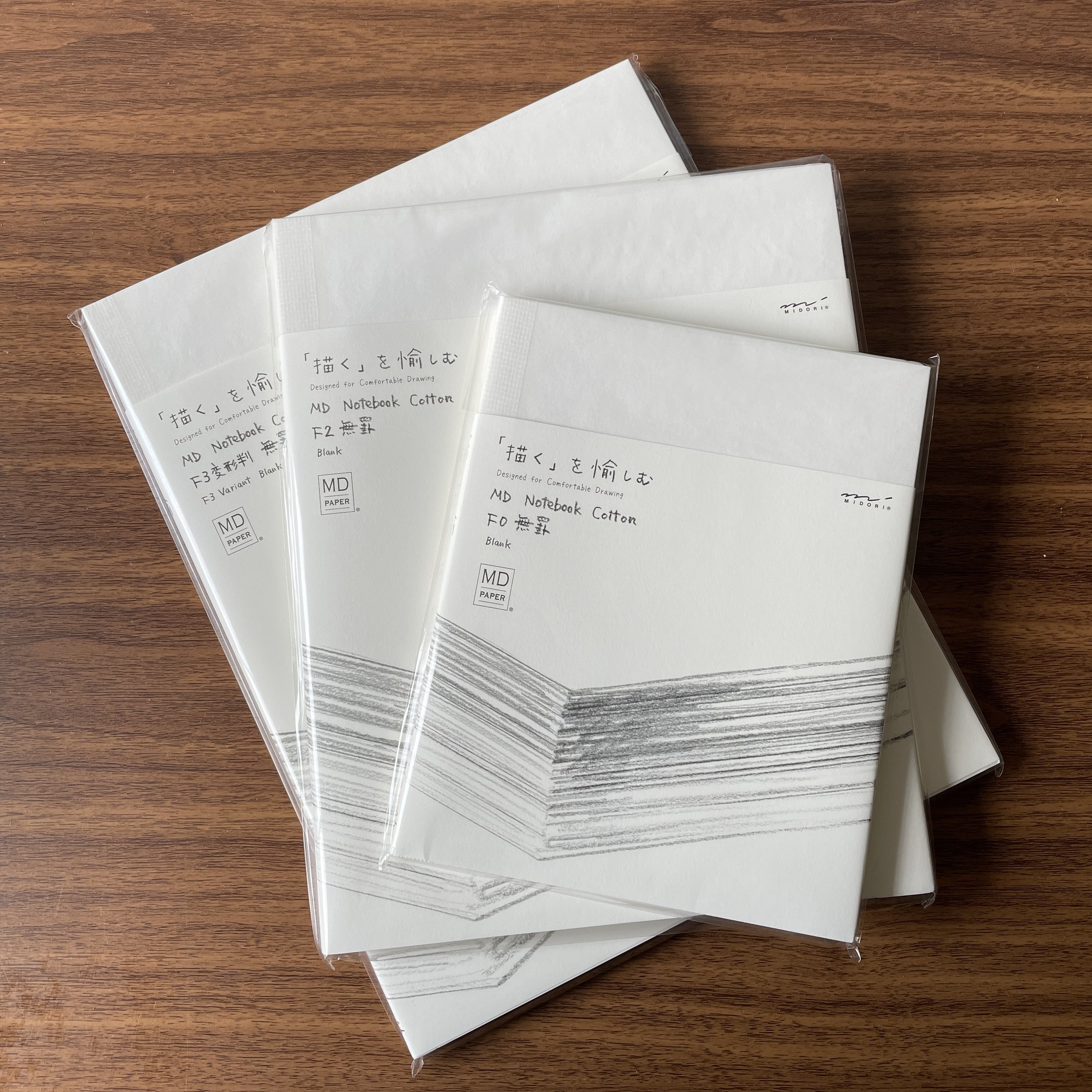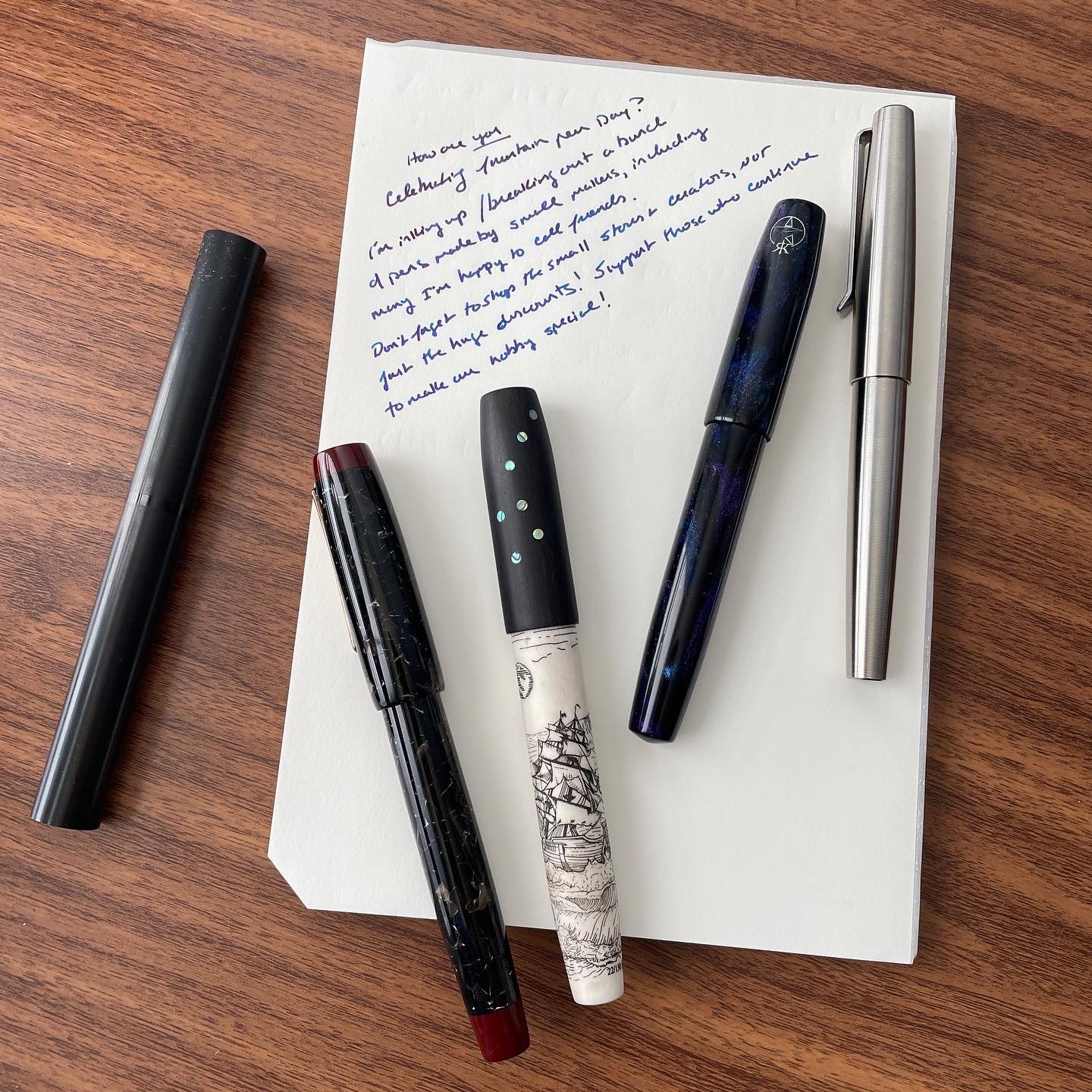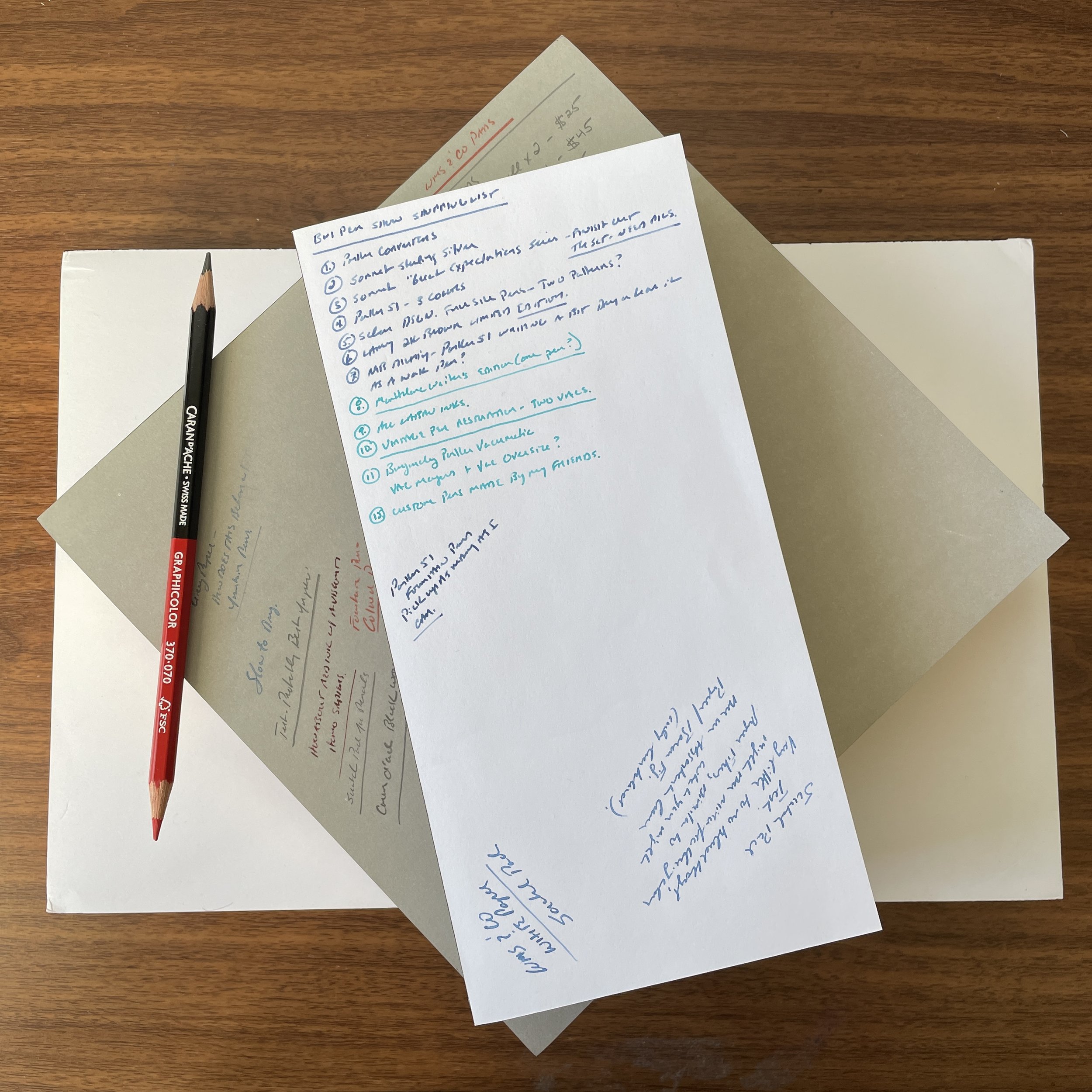One of the more undersung fountain pen friendly paper lines, Maruman’s Mnemosyne notebooks and notepads are among the most versatile, and we’re happy to announce that we’ve expanded our selection of Mnemosyne products to include additional paper sizes and formats, as well as the Mnemosyne label stickers to help you further customize your notes! As of this morning, you can purchase the Mnemosyne spiral notebooks in sizes ranging from A4 to A6 to B5, and we have also added A5 Notepads, a handy A5 Notepad Cover that includes not just a classic padfolio but five pockets for organizing, and two different top-bound steno pads. Label stickers are available in “Tab,” “Task,” and “Flow” formats.
You can view additional Mnemosyne photos and writing samples in the shop listings, or by visiting this past post. As I mentioned above, Maruman Mnemosyne paper unfortunately doesn’t get mentioned as often as brands such as Rhodia or Clairefontaine, though I find it handles fountain pen ink just as well. The perforated pages, durable covers, and attractive price point make this a paper worthy of your consideration.
If you’re interested in reading further on fountain pen friendly paper recommendations, we maintain a running list of fountain pen friendly brands, which also has an active comment section because we can’t test them all!



